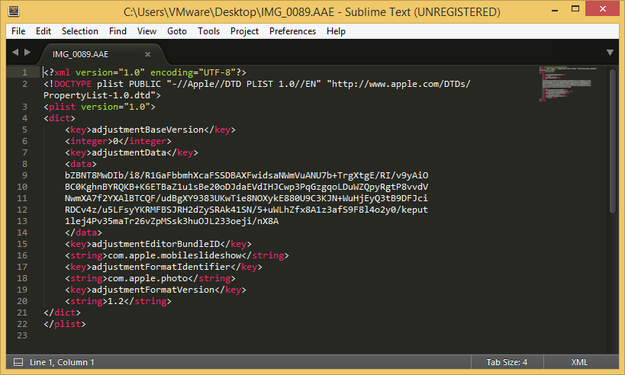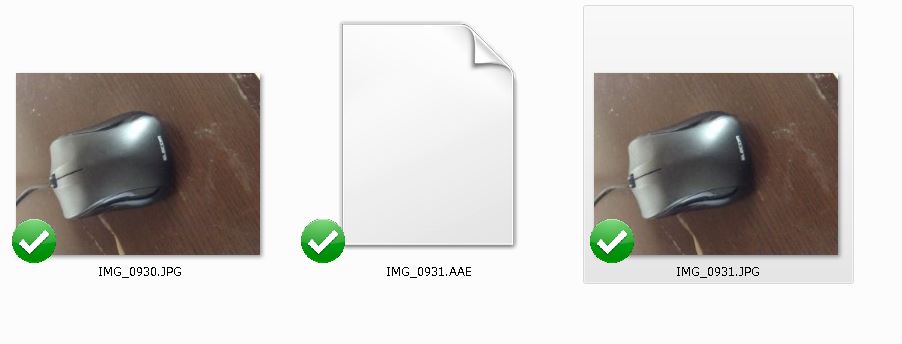- Typically, iPhone (or iPad) users encounter aae files when they connect their devices to Windows computers or when they upload their photos to services not provided by Apple, such as the popular DropBox. The first reaction often is along the WTF?
- .AAE files are called sidecar files in Extensible Metadata Platform (XMP) format.AAE files are used to record changes made by the Photos app on iPhone to original picture files. When you take a picture using your iPhone, the picture will be saved in a.JPG file.
Aae File On Iphone
Today’s Question: Scattered among my JPG files from the iPhone are some AAE files. What are these, and what did I do to create them? Apparently I need some new app to open them, but maybe they’re not worth the trouble.
Tim’s Quick Answer: The “AAE” files accompanying JPEG captures downloaded from your iPhone contain information about adjustments applied to those photos. The presence of one or more of these files indicates you applied adjustments to the images using the Photos app on the iPhone. The adjustments will be retained if you import the photos into the Photos application on your computer, but are ignored by Lightroom.


AAE files are used to record changes made by the Photos app on iPhone to original picture files. When you take a picture using your iPhone, the picture will be saved in a.JPG file. When you edit a picture using the Photos app on your iPhone, all changes will be saved in a.AAE file.
More Detail: When you apply adjustments to photos using the Photos app on an iPhone, those adjustments are non-destructive. This is similar to the workflow in Lightroom Classic, where the information about the adjustments you apply is stored separate from the actual image files, and the source image is not modified.
When you download photos from an iPhone to your computer, the “AAE” adjustment files are downloaded alongside the source capture. This is similar to the XMP sidecar files you may already be familiar with in the context of Lightroom and Camera Raw. In this case, the AAE files can be interpreted by the Apple Photos application on a Macintosh computer, but are not used by Lightroom Classic.

Therefore, in the context of a workflow that revolves around Lightroom Classic, those AAE files are not useful and can effectively be ignored. Of course, if you want to retain the adjustments applied on the iPhone, that means you would need to create a separate copy of the image with the adjustments applied before you download the photos from the iPhone and import them into Lightroom Classic.
Today’s Question: Scattered among my JPG files from the iPhone are some AAE files. What are these, and what did I do to create them? Apparently I need some new app to open them, but maybe they’re not worth the trouble.
Tim’s Quick Answer: The “AAE” files accompanying JPEG captures downloaded from your iPhone contain information about adjustments applied to those photos. The presence of one or more of these files indicates you applied adjustments to the images using the Photos app on the iPhone. The adjustments will be retained if you import the photos into the Photos application on your computer, but are ignored by Lightroom.
More Detail: When you apply adjustments to photos using the Photos app on an iPhone, those adjustments are non-destructive. This is similar to the workflow in Lightroom Classic, where the information about the adjustments you apply is stored separate from the actual image files, and the source image is not modified.
When you download photos from an iPhone to your computer, the “AAE” adjustment files are downloaded alongside the source capture. This is similar to the XMP sidecar files you may already be familiar with in the context of Lightroom and Camera Raw. In this case, the AAE files can be interpreted by the Apple Photos application on a Macintosh computer, but are not used by Lightroom Classic.
How To Open Aae File In Windows
Therefore, in the context of a workflow that revolves around Lightroom Classic, those AAE files are not useful and can effectively be ignored. Of course, if you want to retain the adjustments applied on the iPhone, that means you would need to create a separate copy of the image with the adjustments applied before you download the photos from the iPhone and import them into Lightroom Classic.
